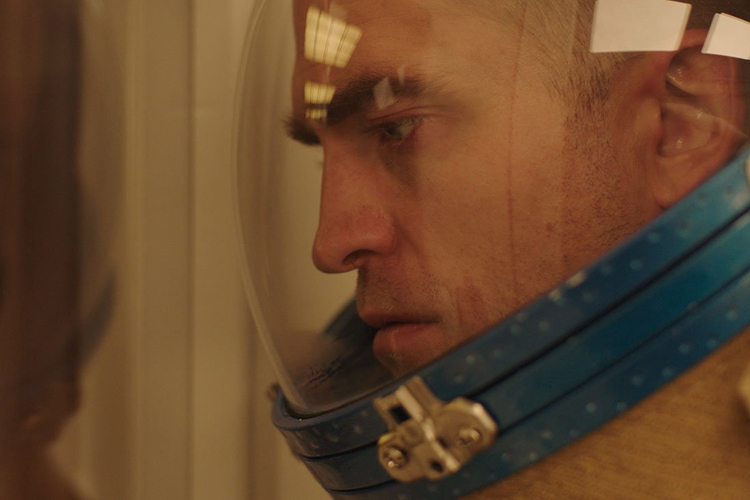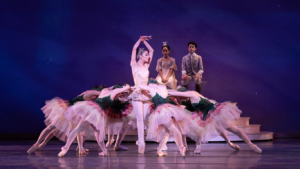Trying to describe High Life, the first English-language film from French director Claire Denis, is a difficult endeavor. It’s a bleak sci-fi starring Robert Pattinson, Juliette Binoche, and André 3000 (yes, André 3000 of Outkast), but that doesn’t quite cover it. It’s a meditation on human purpose, but also a bizarre erotica that features a masturbation chamber called the “f***box”. It’s the ethically relativist, bodily fluid-soaked drama you never knew you wanted—in space!
It’s a provocative movie for the now 72-year-old director, especially after her previous effort Let the Sunshine In was so ordinary compared to the rest of her filmography. It seems Denis was saving all her weird for High Life. It’s the kind of film that’s received as either a sci-fi masterpiece or a pompous mess, so which is it? Is it neither?
It’s certainly singular. High Life opens on an empty spaceship, populated only by the stoic Monte (Robert Pattinson) and his toddler daughter Willow. From the movie’s opening shots, Claire Denis hints at unspoken context through muted but evocative mise-en-scène: a lush, abandoned garden; the vacuous ambivalence of space; the indeterminate age of writing scratched into a wall. Cinematographer Yorick Le Saux, utilizing the ethereal naturalism of his collaborations with Oliver Assayas (Clouds of Sils Maria, Personal Shopper), adds a delicacy to the spaceship’s sparse production design. By visual suggestion alone, High Life creates a contrast between human life and the coldness of its surroundings.
The movie doesn’t dispense all of its themes with such restraint, however. Monte and Willow’s first “conversation” involves Monte telling his daughter that it’s “taboo” to eat one’s own excrement, followed by an extended attempt to teach Willow the word “taboo”. I wonder what this movie could be touching on?
Similarly, the purpose of the spaceship and its former inhabitants is initially built as an interpretable mystery, until the movie suddenly cuts to an interview on Earth between two characters that we never see again. The interviewee, a professor, explains the spaceship with some clumsy exposition: its crew consists of prisoners on an involuntary suicide mission to harness the energy of a black hole.
This oscillation between subtle and blatant becomes a distinguishing feature of the movie. Like a high-concept version of Nietzsche’s Thus Spoke Zarathustra, High Life’s outlook on humanity’s goals and desires is increasingly nihilistic, and its characters’ search for meaning becomes internal by necessity. But High Life is excessively overt with its nihilism. From 2001: A Space Odyssey to Ex Machina, space and technology have long been cinematic tolls for the death of inherent meaning. What makes these movies interesting is how humans operate and create meaning within those spaces—whether through 2001’s Übermensch ending or Ex Machina’s dance scene. For the most part, High Life uses its characters as additional signs of meaninglessness. It loses its humans in inhumanity.
This can be a functional technique—Yorgos Lanthimos has made compelling statements by reducing human beings to absurd simplicity—but among High Life’s interstellar darkness, mechanization, and depiction of in vitro fertilization, it’s belaboring the point. When Monte comes across an identical spaceship populated by dogs, High Life has already demystified the human experience enough. We get it: humans are animals.
Fortunately, the movie’s indelible images work better on their own than they do as parts of a whole. Denis and her team craft some unforgettable sequences: a woman straddling a metal dildo, writhing alone in the piercing dark; a new mother dripping in her own breast milk after she’s denied access to her baby; the convergence of galaxies as Earth sinks deeper into the void. High Life’s moments of vivid imagery feel more moving than the film does in totality.
One could call High Life a flawed triumph, but it’s too interesting to be defined by its flaws, and not refined enough to be considered triumphant. Instead, it floats somewhere in the space between the two.
★★★ (3/5)




